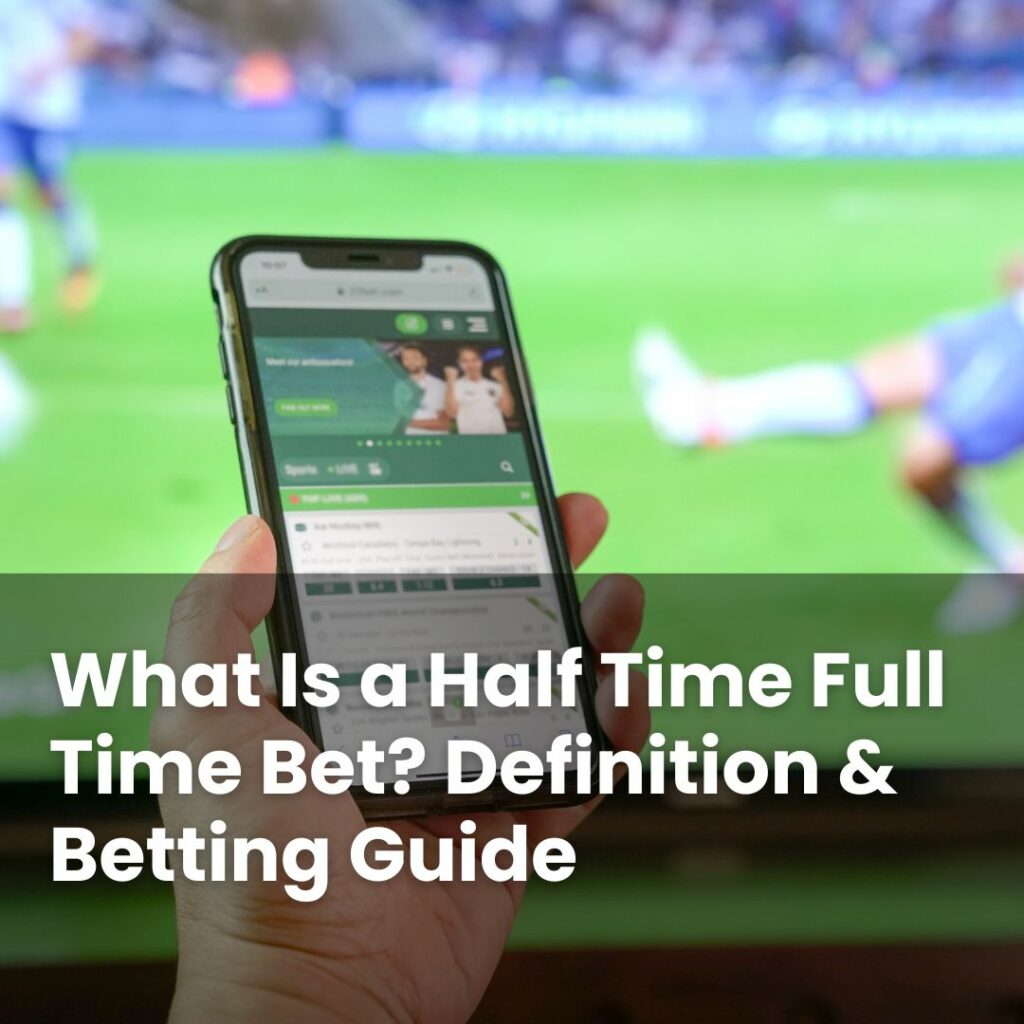You may come across half time full time bets when browsing online bookmakers, but the format may seem a bit unfamiliar at first glance.
This blog post walks through what the market involves, how it operates, the typical formats shown, the sports that use it, how the odds are shaped, and what you might want to think about before making a decision.
Read on to learn more.
What Is a Half Time Full Time Bet?
A Half Time/Full Time bet is a type of football wager where you’re not just predicting who will win the match, but also who will be leading at half time. It combines two predictions into one bet: who will be ahead at the halfway point, and who will be ahead at the final whistle.
To win this type of bet, you must get both parts correct. For example, you might bet that Team A will be winning at half time, but that Team B will come from behind to win the match. Alternatively, you could back the same team to be leading at both stages.
This is what makes the Half Time/Full Time market different from a standard match result bet, which only looks at the final score. Here, you’re betting on how the match unfolds over time, not just the outcome at the end.
Once you understand the concept, it becomes easier to read the available betting options and see what each one means in practical terms.
How Does a Half Time Full Time Bet Work?
In listings, you’ll find various combinations reflecting the scoreline at the interval and again at full time. These might include either team leading, or the scores being level, at either point. For example, a match could be even at the break, then swing in favour of the away team by the end.
All outcomes are based on the official 90 minutes plus stoppage time in football. Unless stated otherwise, anything that happens in extra time doesn’t alter the result for this type of market.
It is often made available before the match starts, although not all bookmakers continue offering it once play begins. Some, however, may provide a live version with refreshed combinations.
Understanding these setups will make the more common outcomes easier to recognise.
See Our Top-Rated Online Casinos
Find the best online casino bonuses, read reviews from real players & discover brand new casinos with our list of recommended sites
What Are the Most Common Outcomes in Half Time Full Time Bets?
The market is often listed using a format like Home/Home, Draw/Draw, or Away/Home. Each pairing spells out the team that is ahead at each stage.
Here’s how they are usually interpreted:
- Home/Home: The home side leads at the break and still leads at the end.
- Draw/Home: The match is level halfway through, then finishes with the home side ahead.
- Away/Draw: The away side is in front at half time, but the match ends evenly.
Some combinations suggest a team has the upper hand throughout, while others indicate the game might shift in tone or intensity after the interval.
These patterns are more relevant in some sports than others, especially those with a defined midpoint.
Can You Place Half Time Full Time Bets on Different Sports?
While most commonly found in football, this structure appears in other sports, too. The key factor is a timed match with a clear halfway mark and a natural end point.
Some bookmakers extend this format to team sports like rugby or basketball. The idea remains the same: your prediction covers who is ahead halfway through, and who leads at the final buzzer, with the outcome based only on the standard time rules for that sport.
Availability can differ from one event to the next. If you’re exploring this market for a particular match, check the options listed by each site.
Before diving into selections, it helps to understand how the prices are put together.
How Are Odds Calculated for Half Time Full Time Bets?
Each pairing reflects the chance of two linked moments occurring in the same game. Bookmakers weigh up elements such as recent team displays, known line-ups, how the teams typically play in different periods of the match, and other fine details.
A combination where the same side is ahead throughout tends to have a shorter price, as fewer variables need to change. When one side leads at half time but a different result follows, prices are typically higher, as the scenario relies on a momentum shift.
Individual bookmakers may interpret these factors differently, so checking a few sources may help if you’re looking for the most favourable reflection of your view.
Once you’ve explored that, it’s time to think more closely about what might influence your choice.
What Should You Consider Before Placing a Half Time Full Time Bet?
If you choose to explore the half time full time market, a good place to start is with how the teams tend to play. Some sides come out strong from the first whistle, while others take longer to settle in and often grow into the match after the break. That can be down to tactics, substitutions, or simply the players available on the day.
Rather than relying solely on recent results, you might find it beneficial to look at things like how many shots a team takes, the quality of chances they create, or whether their goals usually come early or late in the game. These details can give you a better feel for their usual rhythm across both halves.
Conditions on the day may also play a part. If the pitch is heavy or the weather slows things down, the match could start more cautiously. Teams coming off a demanding run of fixtures might not press as hard early on, either, which could affect how you view the opening 45 minutes.
Before making any decisions, it’s worth double-checking how the market is settled. Most follow the outcome after 90 minutes plus stoppage time, but it’s always good to be sure, especially if the fixture could go beyond that.
And of course, if you do choose to bet, make sure your stake fits within your personal limits. If it ever feels like it’s no longer about enjoyment, or you’re unsure about your play, there’s support available at BeGambleAware.org.
Used thoughtfully, this type of market may offer a structured way to explore how you think a match might unfold—from the opening half to the final whistle.



